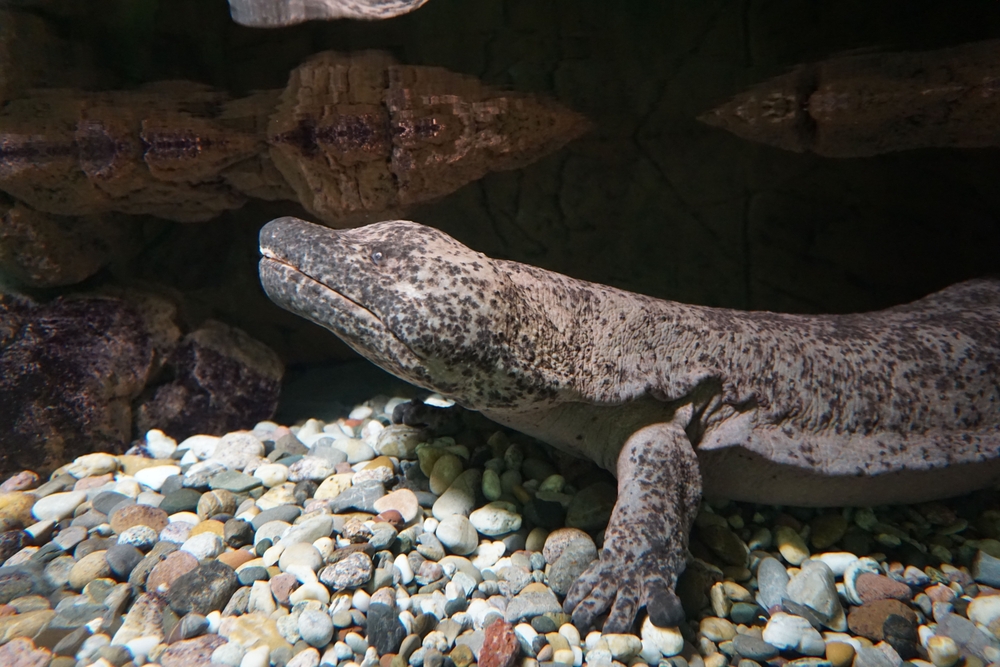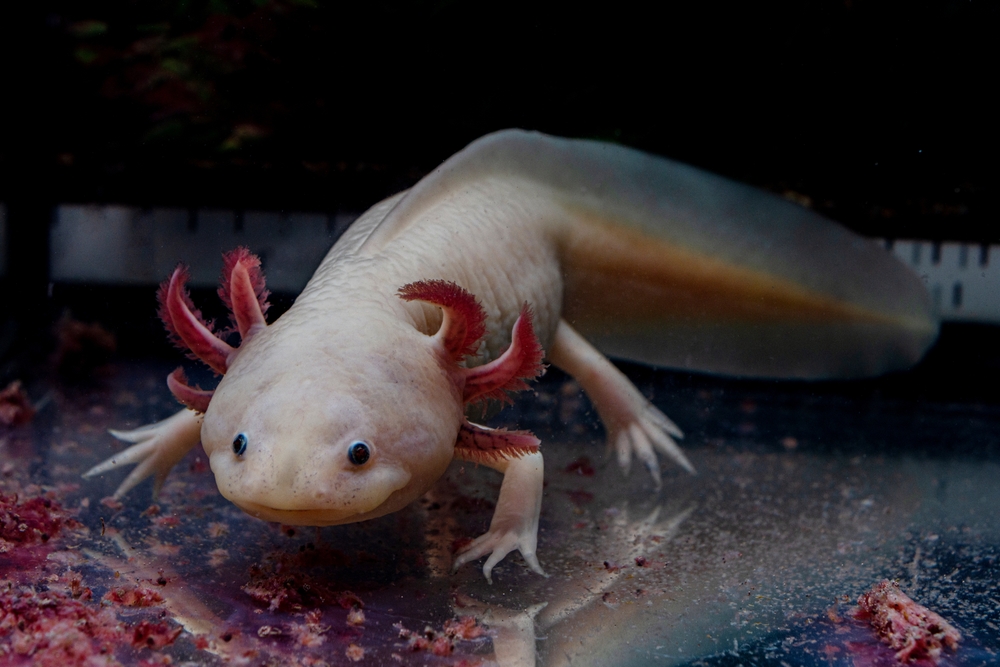Uniqueness
The Chinese giant salamander (Andrias davidianus) holds the title as the largest living amphibian, growing up to 5.9 feet (1.8 meters) in length and weighing over 130 pounds (60 kg). This enormous size sets it apart from every other amphibian species and reflects a lineage over 170 million years old, making it a living relic from the age of the dinosaurs.
Living Fossil of the Cryptobranchidae Family:
Belonging to the Cryptobranchidae family—also known as “giant salamanders”—this species has changed very little over geological time. Its ancient body plan and physiology closely resemble that of fossilized amphibians from the Jurassic Period, earning it the nickname “living fossil.”
Cutaneous Respiration via Wrinkled Skin:
Unlike most amphibians that rely heavily on lungs or gills, the Chinese giant salamander breathes primarily through its loose, heavily wrinkled skin, which increases surface area for cutaneous (skin) respiration. This adaptation allows it to thrive in cold, fast-flowing, oxygen-rich streams where gill-based breathing would be inefficient.
Poor Eyesight, Strong Sensory System:
Its tiny, lidless eyes offer minimal vision, but the salamander compensates with an advanced lateral line and skin-based vibration sensors. These allow it to detect prey and environmental changes through pressure waves—similar to fish—making it highly sensitive to motion in dark or turbid waters.
Paternal Care in Amphibians:
One of the few amphibians to exhibit paternal care, male Chinese giant salamanders guard their nests of 400–600 eggs, protecting them from predators, debris, and fungus. This behavior boosts offspring survival and is rare among amphibians, especially those of this size.
Critically Endangered and Genetically Fragmented:
Despite its iconic status, the Chinese giant salamander is critically endangered due to habitat destruction, overharvesting for traditional medicine and food, and genetic dilution from commercial breeding programs. Wild populations are now so scattered that some are genetically distinct enough to be considered separate species or subspecies—an active area of scientific research.
Summary:
The Chinese giant salamander is extraordinary in size, biology, and evolutionary history. With its prehistoric appearance, cutaneous respiration, sensory adaptations, and paternal care, it stands as one of the world’s most unique amphibians. A symbol of ancient biodiversity and modern conservation urgency, this species is as fascinating as it is imperiled.




































































